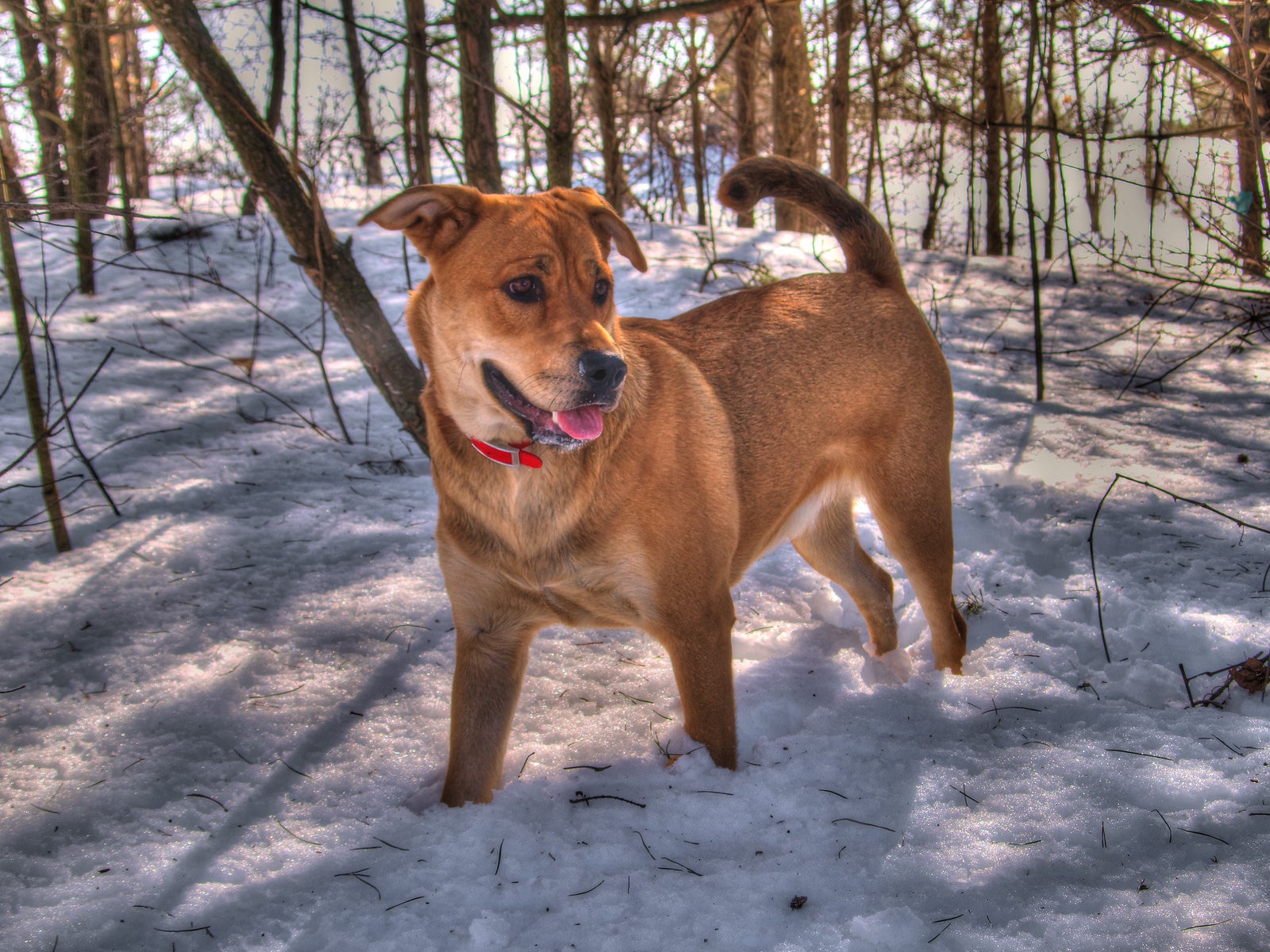Protect Your Dog From These 5 Dangers on the Trail

'Michael Gil'
Hiking in northern Idaho years ago, I encountered my first-ever wild moose. I stood in amazement of the large bull, but the moment was cut short by a screech from my dog, Daisy. I turned around to see her booking it out of the bushes, covered in porcupine quills.
Spiny wildlife isn’t the only threat facing our furry buddies out in the wild. Memorize these five dangers to keep your dog—and you—safe.
The Threat: Wildlife Traps
Although most states have laws on who can trap and where and when they can do it, not everyone follows the rules, and many traps are finding their way close to popular trails. Sometimes, even legal traps can pose a risk, as was the case for a Wyoming family who lost all three of their dogs in 2014. There are a variety of traps, including leg holds and snares, which could strangle your dog.
Avoid It: Get to know trapping regulations for the area where you are hiking (this can generally be found on the state’s parks and wildlife or fish and game department page), but also be wary of illegally-placed traps. Wildlife traps are purposely hidden and baited, so it’s best to keep Fido on the trail or on leash if he wanders. You’re most likely to encounter traps closer to trailheads and areas with easy access to roads.
The Threat: Giardia
Most backpackers know they shouldn’t drink water straight from a stream. But many of us let our dogs do this without a second thought. Although canines have tough guts, they are still susceptible to the parasite giardia. According to University of Missouri Extension, surface water supplies like springs, lakes and ponds are frequently contaminated with the parasite. Symptoms may take weeks to appear, but can include diarrhea or green shiny poo, abdominal cramps and gas. Although many infected dogs show no symptoms, they can still pass on giardia to humans, according to VCA Hospitals.
Avoid It: Bring your own water supply for pup and filter any new water just as you would for yourself. It’s inevitable that your dog will drink some stream water here and there, but get them into the habit of drinking their own when possible. The Gulpy water dispenser is a reliable, easy way to store your dog’s water.
The Threat: Damaged Paw Pads
I once hiked with a 60-pound dog that had to be carried four miles back to the trailhead because her paw pads had been severely lacerated during our hike. Culprits for cut paws can include sharp or hot rocks and cacti.
Avoid It: You have plenty of choices. If your dog will allow it, you can fit her with a pair of hiking boots. To shield your dog’s paws from extreme heat or cold, another simple yet effective method is using paw pad cream like Musher’s Secret. Be aware of the terrain before you go—some surfaces like jagged rocks are just no good for hiking with dogs. If you’re unsure, leave your best friend at home.
The Threat: Other Animals
When you think about animals that may pose a threat to your dog, bears or cougars probably come to mind. Imagine my surprise when my dog got into trouble with that porcupine on the trail. Other threats include venomous snakes and, occasionally, coyotes—the latter have been known to lure domestic dogs as a pack. The biggest danger: other domestic dogs, especially poorly-trained ones wandering around off-leash.
Avoid It: Keep an eye on your dog and discourage him or her from wandering too far off the trail. I always hike with a bear bell attached to each of my dogs’ collars—the ringing not only alerts bears, but other wildlife as well. If you see or hear any signs of potentially dangerous wildlife—fresh scat, tracks or perhaps the tell-tale rattle of a rattlesnake, leash your dog immediately. Rattlesnakes are most likely to be found hiding under fallen logs, rocks or boulders, so don’t let your dog dig around these areas if you are in rattlesnake country.
The Threat: Plague
The last plague epidemic occurred in the 1920s. But if you live in the Western United States, this disease can still threaten your pooch. According to the Center for Disease Control, most plague cases since the 1970s have occurred in the rural West, with the highest concentration around the Four Corners region of New Mexico, Arizona, Colorado and Utah. As of February, New Mexico in particular has already reported three cases of canine plague in 2017.
Avoid It: Rats, squirrels, and mice are typical plague carriers. According to Pet MD, the disease can spread to a dog if they are bitten by an infected flea or when they ingest an infected animal. If you are hiking in the rural West, especially in the Four Corners, keep sight of your dog and deter them from checking out rodents—dead or alive. Consider equipping your pet with a flea-control product to deter the spread of the disease.
The quickest way to keep your dogs safe on the trail: Keep them on leash whenever possible. If you choose to let Fido run free, make sure he or she reliably responds to recall.